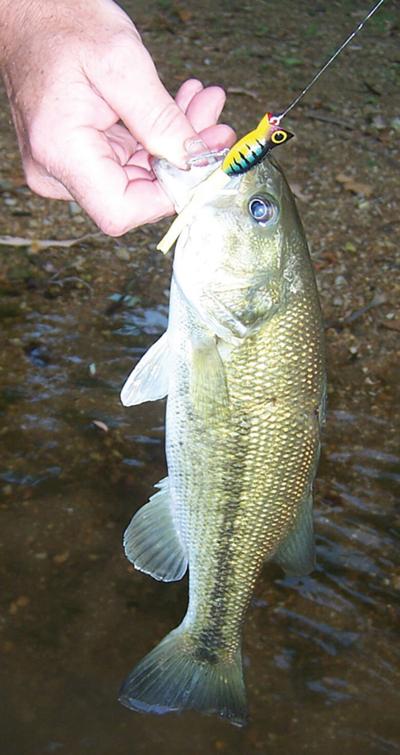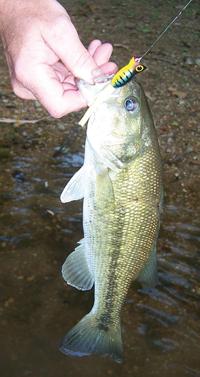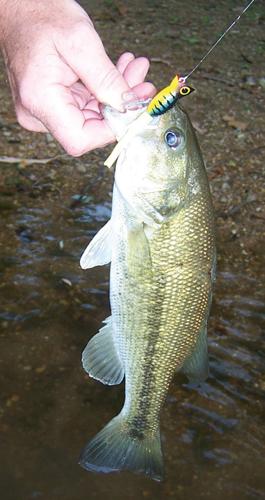As a part of its management plan to improve smallmouth bass fishing on some streams, the state Department of Conservation adjusted regulations on fishing for spotted bass starting in the late 1990s. The most significant changes have eliminated the minimum length restriction and doubled the daily limit on some streams.
By encouraging expanded harvest of spotted bass, more habitat and food would be left for the smallmouth. Also known as Kentucky bass, the spots have been extending their home range further upstream on the tributaries of the Mississippi and Missouri rivers.
Specifically, that expansion is being monitored on the Meramec, Bourbeuse and Big rivers. During the open season from Memorial Day Weekend to the end of February, anglers may keep up to 12 spotted bass of any size on the three streams. Conversely, only one smallmouth can be kept on segments of the three rivers and any “keeper” must be at least 15 inches long.
The regulation adjustments are partly the result of efforts by the Missouri Smallmouth Alliance, an organization founded in 1992 to “help protect and improve our Missouri Ozark smallmouth fisheries through conservation, education and recreation.”
On Saturday, Sept. 20, the group will put its advocacy into action with its Spotted Bass Roundup in the Meramec River basin. Members will fish the Big, Bourbeuse and Meramec rivers, keep the spotted bass they catch, and come together for a fish fry celebration at Robertsville State Park. The member who brings the heaviest stringer to the park by 5 p.m. that day will receive a commemorative prize.
The August edition of the group’s newsletter, “Bronzeback News,” announced the return of the event and suggested the best stretches of the three streams for anglers to fill their creels with up to 12 spotted bass. In Jefferson County, fishermen were told to target Big River from public accesses at Washington State Park, Mammoth Bridge, Merrill Horse, Brown’s Ford, Morse Mill, Cedar Hill and Rockford Park.
Recommended river accesses on the Meramec included launching from Red Horse, 30 Bridge Outfitters, Old Cove Canoe Rental, River Round, Choteau Claim, Robertsville State Park, Pacific Palisades, and Allenton. On the Bourbeuse, the target area float trips start at Reicker Ford, Mayer’s Landing, Union Access, Uhlmeyer and Choteau Claim.
Being able to tell the differences among the three species of black bass in the river is key to anglers helping with management. Spotted Bass Round Up fishermen cannot keep any largemouth or smallmouth bass they catch. All three are present in the lower Meramec River basin.
Spotted bass are the smallest of the three with a maximum size of about 20 inches, while weighing in at less than four pounds. Most smallmouth bass top out at about 22 inches and up to six pounds. While the record-breakers are bigger, largemouth peak at about 24 inches and 15 pounds. The biggest of all three are caught in lakes and other impoundments, not small streams and rivers.
A spotted bass and largemouth look the most similar with their predominantly green and white color scheme and dark lateral line. Rows of spots that give the Kentucky bass its official name are a noticeable first impression, and jaw length is an identifiable distinction. The most reliable unique feature is a rough patch on the tongue in spotted bass that isn’t present for largemouths.
Smallmouth bass have a different color pattern that spawned their nicknames like bronzeback and brownie. Their jaw line is similar to the spotted bass, and most also have the toothy tongue patch. But in reality, no one should mistake a smallmouth for a spotted bass.
Membership in the Missouri Smallmouth Alliance is free and available through the organization’s website, missourismallmouthalliance.org.
John Winkelman has been writing about outdoors news and issues in Jefferson County for more than 30 years and was the Associate Editor for Outdoor Guide Magazine. If you have story ideas for the Leader outdoor news page, e-mail ogmjohnw@aol.com, and you can find more outdoor news and updates at johnjwink.com.





